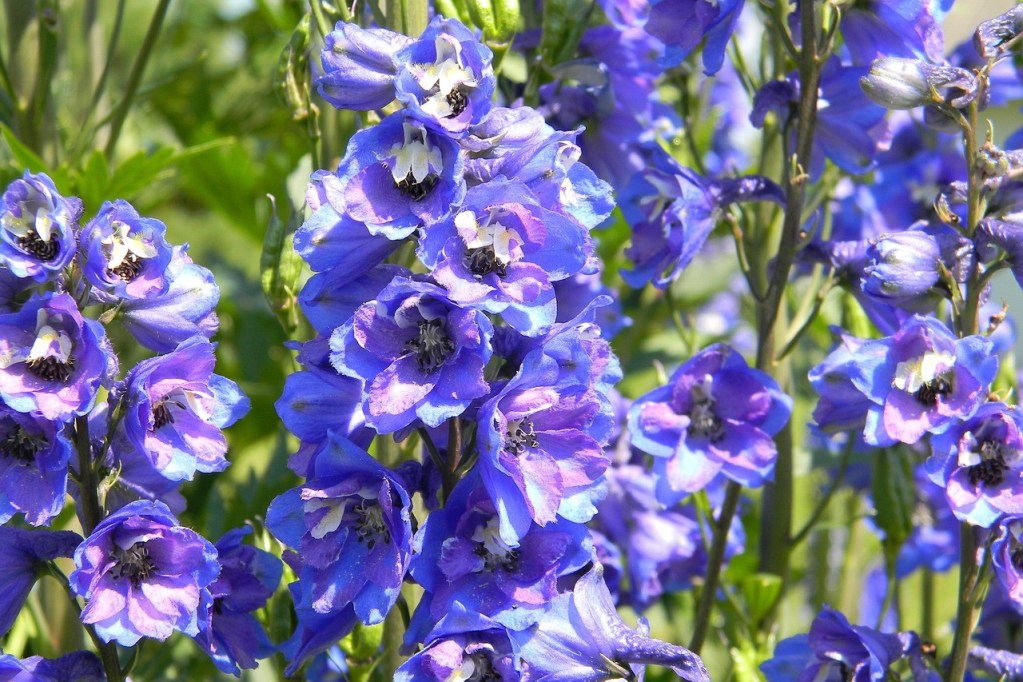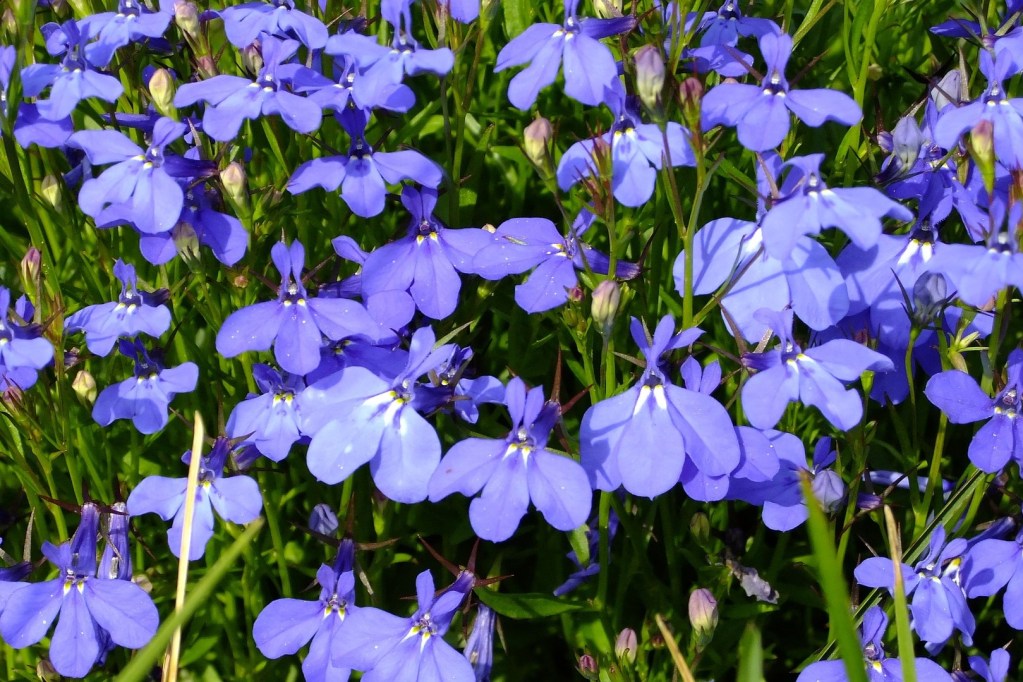
Blue is a lovely color that can be calming or invigorating, and there are many flowers that come in shades of blue. No matter what sort of mood you’re looking for, there is sure to be a blue blossom that captures it. From the bright, happy blue of cornflowers to the darker, more serene blue of lobelia, there’s something on this list for everyone. We’ll even give you some care tips, so you can get started growing them right away. Here are our six favorite blue flowers for you to add to your home or garden.

Cornflower
Cornflower, also called bachelor’s button, is a cheerful annual flower in the aster family. While it can be found in shades of white and pink, blue cornflowers are the most iconic. Cornflowers thrive in open, sunny spaces, so take care not to plant them too close to taller plants that might block them from getting sunlight.
However, cornflowers are exceedingly adaptable and low-maintenance plants. Before they were cultivated in gardens, cornflowers grew as weeds in cornfields (that’s where they get the name cornflower), and they haven’t lost any of that weedy stubbornness. They will grow in almost any type of soil, and can tolerate light shade, light frosts, heat, and even drought.

Delphinium
Delphinium, or larkspur, grows in tall flower spikes that come in many colors and shades. You can find delphinum flowers in just about any shade of blue you can think of, from pastel to sapphire to indigo. Although the most common flower spikes resemble snapdragons (and the less common ones resemble columbine), you might be surprised to learn that delphinium is actually in the buttercup family.
In order to thrive and grow to their full height, delphinium needs plenty of sunlight and water. They prefer full to partial sun, well-draining soil, and consistent moisture. Delphiniums enjoy warm weather, but they don’t do well in extreme heat. For hotter climates, make sure your delphinium has shade in the afternoon to protect it from being scorched.

Lobelia
When listing blue flowers, lobelia might not be one that springs to mind. While it isn’t as common as cornflowers, lobelia is still a striking flower that comes in vibrant shades of blue, purple, and red. Lobelia cardinalis, or cardinal flower, is popular with hummingbirds, while shorter varieties make excellent garden borders.
They can be tricky to grow, as lobelia needs plenty of water but is also prone to fungal infections when young. However, if you’re attentive and patient, lobelia is a prolific bloomer and can easily fill a garden with many flowers. Lobelia is also a great choice for containers, and it looks particularly nice spilling over the edges of a window box.

Columbine
Columbine has a unique flower shape that is eye catching in gardens and containers. It has colorful, star-shaped outer petals with rounded, cup-shaped, white inner petals. The outer petals can be bright blue, purple, or red. Much like delphinium, columbine is also in the buttercup family, and it pairs well with other buttercups.
When it comes to care, plant or place your columbine in full sun to partial shade. In hotter climates, make sure they have shade in the afternoon, as they can wilt or scorch in the heat. Plant them in well-draining soil. Columbine needs to be watered regularly, but it does not tolerate wet feet.

Baptisia
Baptisia, also called wild indigo or false indigo, is a darker blue color and can actually be used to make blue dye. While European colonizers thought the dye color wasn’t as rich as true indigo (hence the name false indigo), the dye made from baptisia is still extremely beautiful. As an added benefit to your garden, baptisia is a legume! Legumes are nitrogen-fixing plants, meaning they can add nitrogen back to the soil over time. Adding baptisia to your flower garden or growing it as a cover crop can help revitalize your soil.
Baptisia is native to the eastern part of the U.S. and thrives in that climate. Plant your baptisia in full sun, as shade can cause the stems to droop. Baptisia needs little care once it’s established, but it appreciates the occasional watering.

Phlox
Blue phlox flowers tend to be either quite pale or a bit purple, but they are still very lovely blue flowers. Phlox is most commonly found in vibrant pink or purple, so keep an eye out for Phlox divaricata (wild blue phlox) or the Phlox paniculata varieties (“Blue Flame” and “Blue Boy”), as these are your best bets for beautiful blue phlox flowers.
Plant your phlox in full sun to partial shade, but keep in mind that more sun means more flowers. Avoid planting phlox in full shade, as they are prone to powdery mildew. Water your phlox every few days to once a week, or whenever you notice them drooping. Phlox does not need to be pruned, but it does benefit from deadheading.
These six blue flowers are just the tip of the iceberg — there are so many amazing blue flowers to add to your garden! From beautiful blue hydrangeas to cute daisies and asters, it seems like the options are endless. These six are a great place to start, though, and you’re sure to find something on this list that fits your garden.



